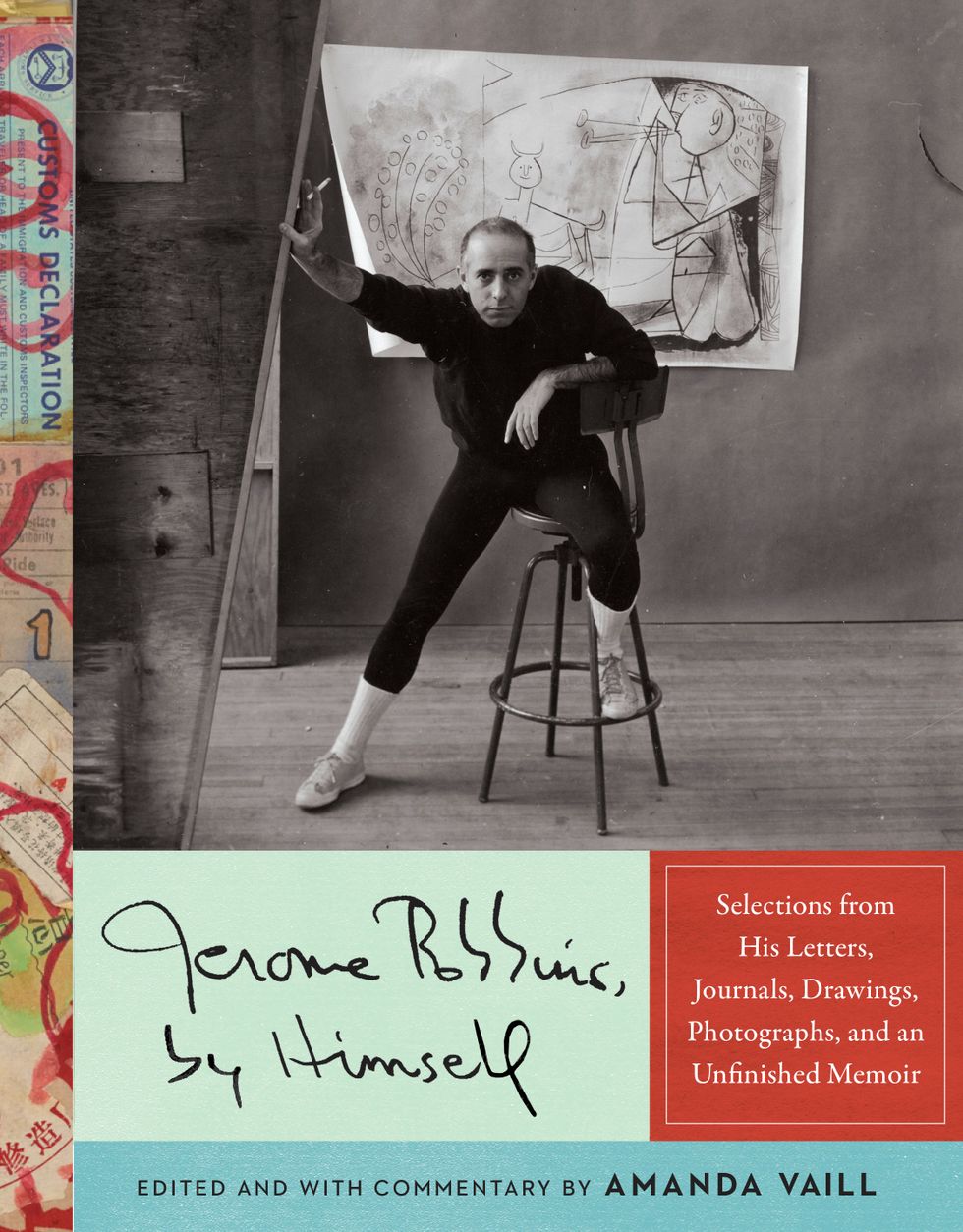6 New Dance Books for Your "To Read" List, Penned by the Likes of Jerome Robbins and Twyla Tharp
There are a number of new dance titles hitting bookstores this fall, and there seems to be something for everyone. Practical advice from Twyla Tharp and Annie-b Parson? Check. Enticing biographical entries featuring writing by the likes of Jerome Robbins and Mark Morris? Check. Gorgeous coffee table books and distillations of academic research? Check and check. Here are the six books we cannot wait to see in print.
Jerome Robbins, by Himself
Figures of Jerome Robbins’ stature often seem unknowable. This new book, edited by biographer Amanda Vaill, humanizes the legend who left such indelible marks on both American ballet and Broadway. Aside from commentary at the beginnings of chapters and explanatory footnotes, Vaill lets Robbins speak for himself; the bulk of the book comprises selections from his letters, journals, drawings, photographs and an unfinished memoir. At turns hilarious and heartbreaking, it illuminates his private musings on success, sexuality and religion, his turbulent, affectionate relationships with contemporaries such as Tanaquil Le Clercq, and the infamously high standards he demanded of both his collaborators and himself. Alfred A. Knopf, October 1.
 Courtesy Alfred A. Knopf
Courtesy Alfred A. Knopf
Ballerina: Fashion’s Modern Muse
 Courtesy Vendome Press
Courtesy Vendome Press
The close relationship between ballet and fashion might today seem like a foregone conclusion, but this wasn’t always the case. In Ballerina, Patricia Mears, deputy director of The Museum at FIT, examines how the figure of the ballerina came to be a prominent influence on design. Eight essays from fashion and ballet experts cover topics such as the evolution of ballet costuming, the rise of ballet-inspired couture, and the impacts Marie Taglioni, Anna Pavlova, Margot Fonteyn and Tanaquil Le Clercq had on the aesthetic ideal of the ballerina. The book is illustrated with archival photos and detailed images of designs. Vendome Press, October 15.
Out Loud
Mark Morris has never been one to mince words. That’s no less true in his upcoming memoir, a frank account co-authored by Wesley Stace, told with Morris’ dry wit and irreverent attitude. The chapters unfold chronologically, from anecdotes of being demoted from elementary school plays for improvising his lines to his self-professedly morbid legacy plan. Morris draws parallels between specific life experiences and dances made throughout his career, illuminating his process, his love affair with music and his unfiltered opinions on collaborators and contemporaries. Penguin Press, October 22.
 Courtesy Penguin Press
Courtesy Penguin Press
Keep It Moving: Lessons for the Rest of Your Life
 Courtesy Simon & Schuster
Courtesy Simon & Schuster
Sixteen years after The Creative Habit hit bestseller lists, Twyla Tharp returns with another book of practical, dancerly advice. This time around, she’s answering the oft-implied question of how she keeps working at age 78. (Part of her answer: Time isn’t the enemy, complacency is.) Each of the 12 chapters contains anecdotes that illuminate her approach, plus a small, related exercise to physicalize the concepts in each section. Simon & Schuster, October 29.
Drawing the Surface of Dance: A Biography in Charts
Thumbing through Annie-B Parson’s new book is an intensely visual experience. After a brief introductory essay, the interdisciplinary dancemaker lets writing largely fall away in favor of the charts and scores she’s drawn to evoke her dances after the fact, as well as sketches of recurring objects and favored concepts. One chapter is structured as a compositional card game, with pages made to be cut out and used. Wesleyan University Press, November 12.
 Courtesy Wesleyan University Press
Courtesy Wesleyan University Press
Merce Cunningham: After the Arbitrary
 Courtesy University of Chicago Press
Courtesy University of Chicago Press
According to author Carrie Noland, we’ve been thinking about Merce Cunningham wrong for years. She argues that to focus solely on his abstraction and posthumanism is to miss one of his primary preoccupations: human relationships and encounters. Drawing from previously unseen materials in the Cunningham archive, Noland puts forward that an overemphasis on his use of chance downplays the choreographer’s compositional skill and sense of theater—and that the two viewpoints are not mutually exclusive. University of Chicago Press, December 6.




